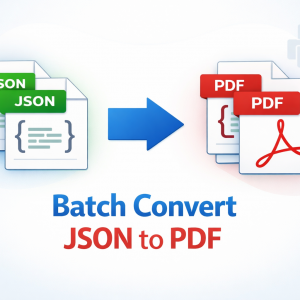In the evolving digital era, remote work has become not just a trend but a strategic imperative. As enterprises embrace distributed work environments, maintaining seamless network operations becomes more critical than ever. A well-structured Network Operations Center (NOC) is at the heart of ensuring that networks, systems, and endpoints remain secure and available. To support this shift, organizations must implement robust NOC best practices tailored specifically for managing remote workforces.
From proactive monitoring to incident response and remote support, here’s an in-depth guide to Network Operations Center best practices that every enterprise with a remote team should implement.
Establishing Centralized Visibility Across Distributed Networks
A fundamental NOC best practice is the ability to gain end-to-end visibility across every corner of the network—even when users are scattered across cities, countries, or continents. Traditional centralized offices once offered IT teams clear visibility into physical infrastructure. However, with remote workers accessing cloud apps, VPNs, and SaaS platforms from various locations and devices, network complexity increases.
To maintain operational control:
-
Use centralized dashboards that consolidate data from on-premise systems, cloud platforms, VPN endpoints, and remote user devices.
-
Integrate tools that provide unified alerts and performance insights into one pane of glass.
-
Deploy remote agents on employee devices to monitor performance issues such as latency, packet loss, and CPU overload in real time.
This centralized view is one of the cornerstones of Network Operations Center best practices, enabling your team to detect anomalies and diagnose issues without needing physical access.
Strengthening Security Protocols for Remote Access
Security is one of the most pressing concerns for remote workforce environments. Every unsecured endpoint is a potential vulnerability. A solid NOC best practice is to enforce strict access controls and network segmentation for remote devices.
Key steps include:
-
Implement multi-factor authentication (MFA) across all remote access points.
-
Use encrypted VPN tunnels and ensure they are regularly updated with security patches.
-
Deploy Zero Trust Network Access (ZTNA) policies to ensure least-privileged access.
-
Monitor unusual behaviors through User and Entity Behavior Analytics (UEBA).
These measures ensure that Network Operations Center best practices are aligned with enterprise-grade cybersecurity standards, helping to prevent data breaches and unauthorized access.
Automating Incident Detection and Response
With a globally distributed team, response times can make or break business continuity. Automated monitoring and alerting systems are vital in recognizing and addressing incidents before they spiral into major outages.
To adopt automation as part of your NOC best practices, enterprises should:
-
Leverage AI-driven monitoring tools that identify anomalies in real time.
-
Set up intelligent alerting mechanisms to notify NOC teams based on severity and business impact.
-
Develop automated workflows that initiate predefined remediation steps—such as restarting services or isolating affected systems.
These efforts reduce Mean Time to Detect (MTTD) and Mean Time to Resolve (MTTR), keeping remote employees productive and connected.
Leveraging Cloud-Based NOC Tools for Flexibility
Cloud-based tools play a pivotal role in enabling NOC teams to support hybrid and remote environments effectively. Unlike on-prem solutions, cloud-native platforms offer flexibility, scalability, and real-time collaboration across time zones.
Cloud-based NOC best practices include:
-
Using cloud-native performance monitoring platforms (e.g., Datadog, LogicMonitor, or New Relic) that support remote log collection and telemetry analysis.
-
Ensuring backup and disaster recovery solutions are integrated within the cloud NOC stack.
-
Allowing NOC personnel to collaborate on incidents and status dashboards through cloud-based ITSM tools like ServiceNow or Jira Service Management.
This aligns with modern network operations center best practices that prioritize mobility and availability—key factors in managing a dispersed workforce.
Prioritizing End-User Experience Monitoring
In remote environments, user experience directly correlates with productivity. Poor connectivity, application crashes, and latency can frustrate employees and delay deliverables.
To ensure a smooth digital experience, enterprises should adopt these NOC best practices:
-
Deploy digital experience monitoring (DEM) tools that track app responsiveness, VoIP call quality, and desktop performance.
-
Conduct proactive root cause analysis (RCA) for recurring issues reported by remote users.
-
Monitor ISPs and third-party service providers that remote employees rely on.
By making user satisfaction a performance metric, network operations center best practices evolve from reactive maintenance to proactive optimization.
Ensuring 24/7 Monitoring and Tiered Support
Remote work doesn't conform to standard business hours. Employees often work across multiple time zones, requiring IT support availability around the clock.
Here’s how to enhance your coverage:
-
Staff your NOC in shifts to offer round-the-clock Tier 1 and Tier 2 support.
-
Implement escalation protocols to route critical issues to senior engineers or vendors when necessary.
-
Use chatbots and self-service portals to handle common user issues like password resets or VPN configuration.
This ensures employees can access assistance anytime—an essential NOC best practice in today’s “always-on” work culture.
Creating Strong Communication and Escalation Protocols
When incidents occur, clear and timely communication becomes vital—not just internally within the NOC team but also with affected employees, stakeholders, and third-party vendors.
Best practices include:
-
Defining roles and responsibilities using a RACI matrix for incident response.
-
Using centralized communication tools (e.g., Slack, Microsoft Teams) with dedicated incident channels.
-
Automating status updates to affected teams and maintaining post-incident reports for accountability and learning.
Strong communication frameworks ensure Network Operations Center best practices extend beyond troubleshooting and contribute to business transparency and resilience.
Documenting Playbooks and Standard Operating Procedures (SOPs)
In a hybrid IT environment, clarity in process is everything. Without well-defined SOPs, even experienced NOC engineers can waste time resolving repetitive or predictable problems.
To operationalize NOC best practices:
-
Create modular playbooks for common issues like VPN failures, endpoint disconnections, or cloud service downtime.
-
Standardize procedures for onboarding new tools, patching software, and handling remote escalations.
-
Review and update documentation quarterly to reflect new tools, workflows, or infrastructure changes.
This not only boosts NOC efficiency but also ensures continuity during personnel changes or shift transitions.
Regularly Auditing Performance Metrics and KPIs
To gauge the effectiveness of your network operations center best practices, you must consistently audit performance. Metrics help identify gaps, areas for automation, or tools that need upgrading.
Useful KPIs include:
-
Network uptime and latency levels
-
MTTR and first contact resolution rates
-
Number of escalations and SLA compliance levels
-
Remote user satisfaction (via NPS or CSAT scores)
With continuous improvement based on analytics, enterprises can mature their NOC into a value-adding, business-aligned function.
Conclusion
Enterprises with remote workforces can no longer rely on outdated IT practices. They need agile, automated, and resilient systems—anchored in proven NOC best practices. From centralized visibility and cloud-based tools to user-focused monitoring and 24/7 support, every aspect of a modern NOC must evolve.
Adopting these network operations center best practices isn’t just about keeping systems online—it’s about ensuring remote employees thrive, business goals stay on track, and the enterprise remains competitive in a digital-first world.







